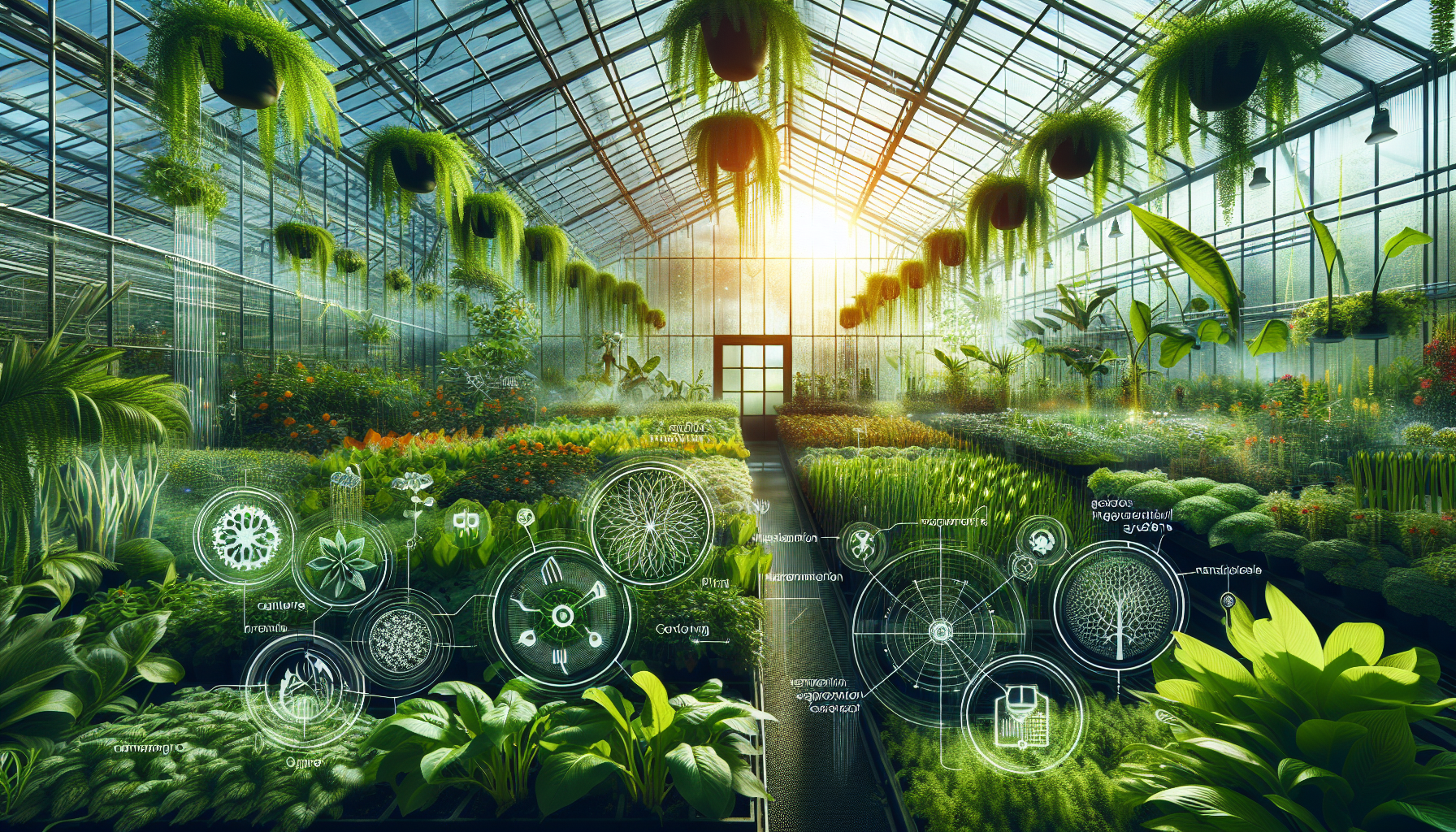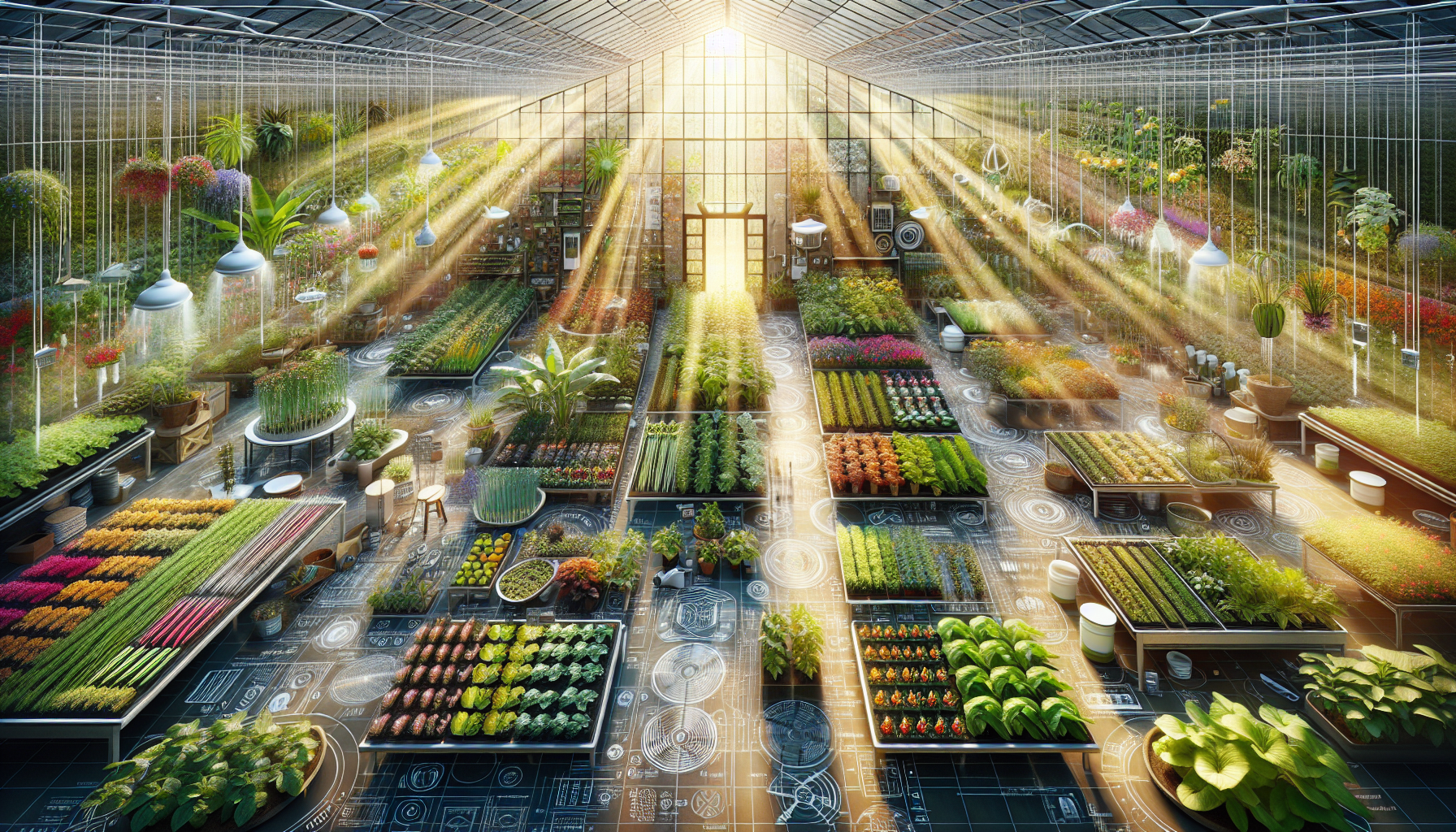
Imagine basking in the serenity of your personal lush garden, replete with vibrant blooms and juicy, ripe vegetables, irrespective of the season outside, sounds enticing, right? With “The Ultimate Handbook for Greenhouse Gardening,” your dream of a year-round green oasis can become a reality. This treasure trove of knowledge encompasses all your needs, right from setting up a structurally sound greenhouse to harvesting your hearty produce. By the end of this handbook, you’ll be efficiently nurturing your plants under the most optimal conditions, while also contributing your bit to environmental conservation. Indeed, the green thumb is just a page away!
Understanding Greenhouse Gardening
Greenhouse gardening allows you to control your growing environment year-round, regardless of the external climate. It’s a wonderful way to grow a variety of plants, from flowers and vegetables to exotic types that you may not be able to cultivate outdoors in your region.
Defining Greenhouse Gardening
Greenhouse gardening refers to the practice of growing plants within a structured shelter. This shelter, or greenhouse, is typically made of transparent materials such as glass or plastic, which allow sunlight to enter while maintaining a controlled, internal environment suitable for plant growth.
Benefits of Greenhouse Gardening
Greenhouse gardening comes with a plethora of benefits. Besides providing a stable environment for plant growth all year round, it also allows for the cultivation of a wider range of plant species. This method of gardening also helps in protecting plants from pests and severe weather conditions.
Types of Greenhouses
Greenhouses come in many shapes and sizes, from simple row covers to elaborate glass structures. There are also various types, including freestanding greenhouses and attached greenhouses. You can even find mini and portable greenhouses that are perfect for small spaces or urban settings.
Climate Control in Greenhouses
One of the key factors in greenhouse success is climate control. This means keeping an optimum temperature and maintaining appropriate humidity levels while ensuring adequate ventilation. Many variables come into play here, but with a bit of knowledge and preparation, you can achieve balance to create a perfect growing environment.
Planning and Designing Your Greenhouse
Location Selection
When planning your greenhouse, location is key. The ideal site is one that maximizes sunlight exposure throughout the day. You should also consider accessibility to water sources, your home, and other factors such as wind direction or the shade from nearby buildings or trees.
Size and Layout Considerations
Reflect on what you plan to grow and choose a size and layout that suits your needs. As a rule, a larger greenhouse is more stable in terms of temperature and humidity fluctuations. However, it’s important to balance this with available space and cost considerations.
Structural Materials
Greenhouse frames can be constructed from many different materials including wood, aluminium, and steel, each with its own set of advantages. Wood is attractive and insulates well, while aluminium is rust-resistant and steel is incredibly durable.
Orientation and Energy Efficiency
Your greenhouse’s orientation can significantly impact its sunlight exposure and energy efficiency. For most areas, a south-facing greenhouse will achieve the most sunlight. To increase energy efficiency, consider insulating, using heat-absorbing materials, or implementing a heat sink.
Budgeting for Your Greenhouse
Budgeting is a key consideration when planning a greenhouse. Keep in mind that costs are not just about initial setup; operating and maintenance expenses should also be factored in. It’s wise to set a clear budget from the beginning and adhere to it.

Greenhouse Construction
Foundation and Framing
The foundation represents the base of your greenhouse and can be built from concrete, blocks, or wood. Framing, on the other hand, is the skeleton of your greenhouse that supports the covering material. It should be strong enough to withstand weather elements and structural stress.
Choosing the Right Glazing
glazing refers to the covering material used for the greenhouse. Glass, polycarbonate, and polyethylene are common options. Each material comes with different light transmission, insulating properties, and cost implications, so choose wisely.
Ventilation Systems
Ventilation plays a vital role in maintaining the proper greenhouse environment. It helps control temperature, remove excess humidity, and ensure adequate carbon dioxide supply for photosynthesis.
Installing Heating and Cooling Systems
Depending on your local climate, heating and cooling systems may be required to maintain optimal temperature levels. Heaters, fans, evaporative coolers, or even geothermal systems can be used.
Insulation and Weatherproofing
Proper insulation helps to conserve energy by reducing heat loss, while weatherproofing protects against external elements, ensuring your greenhouse remains a controlled, nurturing environment for your plants.
Growing Mediums and Soil Preparation
Properties of Different Growing Mediums
Growing mediums can range from the traditional garden soil to soilless mixes such as peat, coco coir, and perlite. It’s important to understand their properties and select a medium that best suits your plant’s needs.
Preparing Soil for Planting
Properly preparing your soil before planting can greatly affect your plants’ health and productivity. This typically involves amendments to improve soil fertility and structure, depending on the results of a soil analysis.
pH Levels and Nutrient Management
Managing pH levels and nutrients is critical to the health of your plants. Most plants prefer a slightly acidic to neutral pH, and a balance of macronutrients (nitrogen, phosphorus, and potassium) and micronutrients (like iron, zinc, and copper).
Sterilization and Pest Control Measures
Soil sterilization can be an effective way to manage diseases and pests. This can be done through solarization or chemical treatments. Additionally, keeping your greenhouse clean and implementing good hygiene practices can help prevent pests.

Greenhouse Plant Selection
Choosing Suitable Plants
Not all plants are suitable for greenhouse cultivation. Factors such as light, temperature, and humidity requirements should be considered when selecting your plants.
Seasonal Planting Strategies
Adapting your plant selection to the seasons can optimize your greenhouse usage. For instance, warm-season crops like bell peppers can be grown in summer, while cool-season plants like lettuce thrive in winter.
Exotic and Tropical Plants in Greenhouses
One of the joys of greenhouse gardening is being able to grow exotic and tropical plants that wouldn’t ordinarily survive in your local climate. From orchids to citrus fruits, a well-maintained greenhouse can be a haven for these species.
Succession Planting for Continuous Harvest
By following a succession planting strategy – planting crops in intervals – you can ensure a continuous supply of fresh produce from your greenhouse.
Seeding, Propagation, and Transplanting
Starting Seeds in a Greenhouse
A greenhouse is an ideal place to start seeds as it offers a controlled environment that promotes germination. Seed trays and a good-quality seed compost will also increase your chances of success.
Cutting, Grafting, and Other Propagation Techniques
Besides seeding, greenhouses facilitate other propagation methods such as cuttings and grafting. These methods can be used to clone favorable plant traits and speed up the initiation of fruiting and flowering.
Transplanting Seedlings
Once your seedlings have established a robust root system, they are ready for transplanting. Proper transplanting techniques promote healthy plant growth and reduce transplant shock.
Managing Growth Cycles
Good understanding of plant growth cycles can help you make sure your plants are receiving the right care during each phase of their life, from the vegetative stage to the flowering/fruiting stage.
Irrigation and Water Management
Automated Watering Systems
Automated watering systems such as drip irrigation or misters can save both labour and water. These systems provide the right amount of water to the plants, reducing water stress and enhancing growth.
Water Conservation Strategies
Incorporating water conservation strategies can contribute to the sustainable use of resources. These include capturing rainwater, reusing water from humidifiers or condensation, and implementing efficient irrigation practices.
Understanding Plant Water Requirements
Different plants have different water requirements depending on their species, size, and growth stage. Observing plant behavior and using a moisture meter can help maintain optimal watering.
Dealing with Water Quality Issues
Problems with water quality can limit the potential of your plants. Regular testing and filtering of your water can prevent issues related to salinity, pH, and harmful elements.
Pest, Disease, and Weed Control
Integrated Pest Management (IPM) in Greenhouses
IPM is a sustainable, eco-friendly approach to pest control that involves a combination of cultural, biological, mechanical, and chemical control methods.
Common Greenhouse Pests and Diseases
Greenhouses can attract common pests and diseases. Regular monitoring, proper identification and understanding their life cycles can lead to effective control and prevention strategies.
Organic Control Measures
For those preferring natural solutions, there are organic control measures available. These include beneficial insects, botanical insecticides, and homemade remedies.
Preventive Weeding and Mulching Techniques
Implementing preventive measures like mulching and proper sanitation practices can go a long way in keeping your greenhouse free from weeds.
Greenhouse Environmental Monitoring and Automation
Importance of Environmental Monitoring
Monitoring environmental conditions such as temperature, humidity, light intensity, and CO2 levels inside the greenhouse helps you manage your crops effectively and optimize their productivity.
Tools for Temperature and Humidity Control
Various devices can be used to control temperature and humidity levels including thermostats, heaters, coolers, fans, shading materials, and humidifiers or dehumidifiers.
Lighting Solutions for Plant Growth
Supplemental lighting can compensate for insufficient natural light. Consider options like fluorescent lights, high-intensity discharge (HID) lamps, or light-emitting diodes (LEDs).
Automation in the Greenhouse
Automation can make managing a greenhouse easier and more efficient. With automated systems, you can control irrigation, temperature, lighting, and even shading with a touch of a button.
Greenhouse Resources and Further Learning
Books and Guides on Greenhouse Gardening
Books and guides provide a wealth of information about all aspects of greenhouse gardening. For example, “The Ultimate Handbook for Greenhouse Gardening” and other greenhouse gardening books can expand your knowledge substantially.
Online Forums and Community Groups
Online forums and social media groups can be a great source of practical advice and inspiration. You can connect with other greenhouse gardeners, share experiences, and learn from each other.
Workshops and Training Programs
Workshops and training programs can provide hands-on learning opportunities. Whether they are provided by your local university, extension services, or garden clubs, these can enhance your greenhouse gardening skills.
Keeping Up with Greenhouse Innovations and Trends
The world of greenhouse gardening is constantly evolving. Stay informed about the latest developments, technologies, and trends to continue improving your greenhouse gardening journey.

